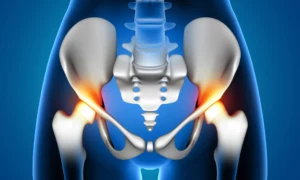Mass spectrometry has emerged as a robust diagnostic tool. Earlier mass spectrometry systems were employed to analyze individual components of a sample. However, they are now seen as a reliable diagnostic tool. Today, researchers have used mass spectrometry for proteomic analysis to identify and quantify a full set of proteins in biological systems.
Today, mass spectrometer systems, such as LC-MS mass spectrometry, are standard for proteomic analysis. Protein biomarkers are more reliable, stable, and abundant than RNA molecules. PCR assays rely on DNA and RNA molecules. Hence, assessing protein biomarkers via LC-MS services is becoming a preferred choice for protein analysis. The current article compares LC-MS labs and qPCR and ddPCR analysis to understand which bioanalytical technique is better.
LC-MS services versus PCR analysis
Unlike techniques involving beams of light, such as Raman spectrometry, which identifies the makeup of analyte samples, mass spectrometers use atomic mass to study the sample. LC-MS method development and validation are increasingly becoming critical for understanding complex study material. Spectrometers are coupled mainly with an additional separating technique for robust separation. However, liquid chromatography has multiple advantages over other techniques, such as gas chromatography.
Researchers focus on LC-MS method development to ensure that the LC unit efficiently separates individual components of a study mixture. Robust analytical assay development helps researchers efficiently separate the analytes before transferring them via an interface into the MS detectors. The MS unit subjects the ionized analytes to multiple electrical and magnetic fields and measures them based on their mass-to-charge ratio. The measured analytes are an indicator of the mass and help researchers determine the composition of the study sample.
Mass spectrometers have several advantages over PCR analysis. Firstly, LC-MS analysis is rapid. Importantly, LC-MS systems study the proteins compared to RT-PCR, which looks at the RNA of the virus. RT-PCR requires genome sequencing to identify the variant of a particular virus. On the other hand, mass spectrometer protein-based assessment can scan and rapidly identify variants, making it an ideal diagnostic tool.
Moreover, MS systems are more accurate than RT-PCR as they look for peptides; hence, there are no false negative or false positive results. Besides alternatives and modifications such as LC-MS/MS assays, researchers have more robust and accurate tools at their disposal. However, LC-MS/MS method validation will remain crucial for generating reliable experimental data.
Despite several advantages, researchers may use RT-PCR over MS systems for diagnosing diseases and infections. The primary reason for this discrepancy is that labs are more equipped for RT-PCR analysis. Besides, PCR analysis has robust modifications such as RT-PCR, qPCR, and ddPCR. Each of these techniques has its unique advantages. However, this trend is increasingly changing. Today, many modern diagnostic laboratories use MS-based techniques to study and diagnose diseases and medical conditions.
In Conclusion
Mass spectrometry is more effective than PCR analysis due to several advantages. However, LC-MS systems require expert technicians and are yet to reach several regional and local laboratories. Therefore, as the effectiveness of the LC-MS assay system becomes well established among the scientific community, large-scale adoption will be the key to making LC-MS systems more affordable and achievable for routine analysis.
Read More: LC-MS/MS Analysis: A Powerful Tool for Analyzing Complex Samples






































